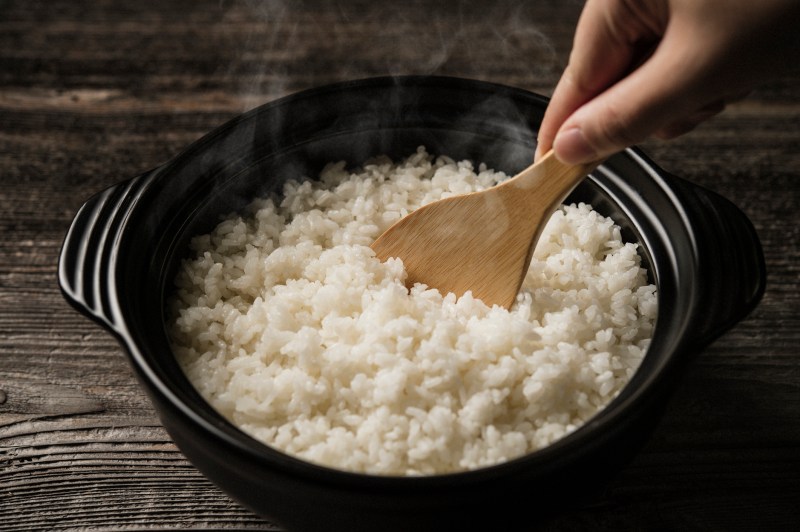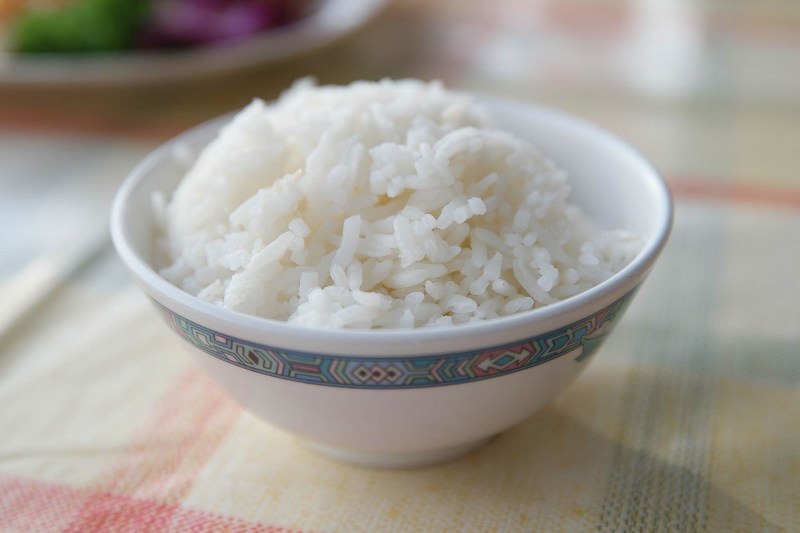
Rice is one of the most versatile foods. From the Italian risotto and the Nigerian jollof rice to rice and beans to the base layer of Japanese sushi, there are endless recipes for rice. Whatever your preferred rice dish, having your rice warm is rather satisfying. Heating your rice brings out its authentic and natural taste.
You shouldn’t have your rice leftovers or takeout cold — it won’t be truly satisfying. The key to making your cold rice fluffy and fulfilling is to find the best way to reheat rice. You can use either a microwave, oven, stove, or a cooking wok to warm up your meal. We’ve listed the best ways for reheating your rice to perfection and provided the steps you should take. Read on for exciting and easy tips on how to reheat your rice.
Related Guides
How to Reheat Rice and Keep It Fluffy

Microwave
An essential kitchen appliance, a microwave provides for the simplest and mess-free way of reheating your rice. It’s great for warming up cold rice in small portions:
- Place your rice on a flat plate.
- Cover the place of rice with a dampened paper towel.
- Microwave your rice for about two minutes.
- Serve immediately when ready.
A microwave risks drying out your food, but covering your plate with a wet paper towel or plastic wrap improves the overall texture and flavor. You can also sprinkle the rice with one or two tablespoons of water for each plate before reheating, plus a dash of salt for flavoring.
Oven
An oven makes an excellent option for reheating rice for a group of people. Still, you can use it to warm up just a plate of rice for yourself. Follow these steps:
- Put your rice in a large, shallow baking dish — spread it out in the dish to ensure even heating.
- Sprinkle the rice with water or vegetable stock.
- Cover the dish tightly with aluminum foil.
- Bake your rice for 20 minutes at 300°F; for small portions, bake for 5 minutes.
- Turn off the oven and serve when ready.
Be sure the rice is warm all way through before serving. This is particularly important when reheating large portions.
Stove Top
You can reheat rice using the stove. You can use a pan or pot to reheat your rice, allowing you to add other ingredients if needed. A stove makes an ideal option for repurposing plain white rice.
- Place your rice in a pot or pan.
- Pour 1/4 cup water over rice. Add more water if you need more moisture or less if you want a drier rice.
- Add other ingredients and flavorings, if you desire, at this step.
- Cover the pot and heat it over a medium-low heat.
- Stir your rice as needed to ensure even heating.
If you consider repurposing your rice, you can add it to a finished soup, turn it into dessert, or a stir-fry.
Wok
Stir-frying your rice in a wok is also effective in warming up the meal. It also lets you add additional ingredients, such as veggies and meat, for a tantalizing dish.
- Heat a tablespoon of your preferred oil in a wok.
- Add your veggies and meat ingredients, starting with those that need to be cooked longer and ending with those that need the least amount of cooking.
- Once veggies and meats are cooked, add the rice to the wok while breaking up any large clumps.
- Sauté the rice continuously to ensure even heat distribution.
- Cook the rice uncovered for three minutes.
- Serve when the internal temperature is 165°F.
Make sure all the added ingredients are well cooked before serving.
Can You Reheat Rice If It’s Been in the Fridge?
You can definitely reheat your cold rice and enjoy it as a main dish or side dish, depending on your recipe. While it’s okay to eat refrigerated rice, it’s vital to cook rice to the proper temperature the first time, store it, and heat rice to the proper temperature when reheating. Rice left at room temperature can cause food poisoning due to a toxin produced by a bacteria called Bacillus cereus. Symptoms are generally mild and go away on their own with rest and hydration, but consist of vomiting and diarrhea. The most important factor in preventing this type of infection is to cook and store rice properly the first time you cook it. If it is left at room temperature and then cooled, it could result in bacterial growth. In fact, keeping this food out for more than just one hour could result in growth of Bacillus cereus. Try to refrigerate rice within one hour of cooking. If you suspect that your rice is contaminated, you should throw it out, according to LiveScience.com. In general, keep hot foods above 140°F and cold foods lower than 40°F.
How to Store Cooked Rice in the Fridge
Storing your rice correctly is essential to ensure a tasty meal when you want to reheat it for lunch or dinner. The key is to freeze or refrigerate it as quickly as possible after cooking. Ensure it’s cooked at high temperatures to prevent the growth of bacteria.
After cooking, make sure your rice’s temperature is out to the danger zone — 40°F and 140°F. Then, follow these steps to store your cooked rice in the fridge:
- Allow it to cool to room temperature — but aim to refrigerate it within one hour after cooking.
- Pack your cooled rice in airtight containers.
- Store it in the fridge for up to four days.
Ensure the food is stored at a safe temperature — 40°F and below. Your fridge should always be at this temperature. If you keep your cooked rice in the freezer, you can extend the shelf life by one month. Remember white rice lasts longer than brown rice.
Can You Eat Cold Rice?
While reheating cooked rice only takes a few minutes, you might eat cold rice for various reasons. Some recipes, such as sushi and rice salad, call for cold rice. Eating cold rice is completely safe as long as it was cooked properly the first time and has been stored properly. Make sure your refrigerated foods are appropriately kept to avoid the risk of food poisoning. Always wash your hands and storage containers carefully before handling and storing your cooked rice.
Rice is a food staple all over the world. Enjoy your rice fresh, cooled, or reheated!



